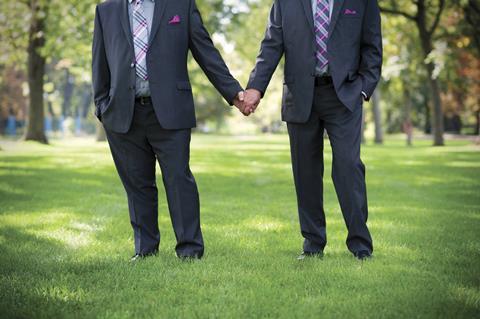Empower teachers to be who they are, for everyone’s sake
I’ve known since my early twenties I’m gay.
I can remember the moment I worked it out in my head. But it took several years before I told anyone else. That required weeks and months of mental preparation, a friend I trust and a certain amount of dutch courage. I’m not being flippant when I say that coming out for the first time was the hardest thing I’ve done.

However, coming out of the closet isn’t something you do only once. You never stop coming out. When I’m talking to someone new, I still pause to decide whether to refer to my husband using gender-neutral language. A simple passing comment on what we had for dinner last night still means a conscious decision on whether I refer to him as ‘he’ or ‘they’. Fortunately for me, that decision continues to get easier.
On reflection, I’ve had a tremendously supportive experience as an openly homosexual man. I haven’t suffered any bullying or barriers. I’ve only received trivial and fleeting homophobic abuse. I feel comfortable being myself in my workplace, and my colleagues, friends and family all joined me in celebrating my wedding last year.
I hope my experience is typical. Sadly, I know it isn’t universal.
Out as a teacher
During my experience as a teacher, my personal life was never particularly a topic of conversation. So I can only imagine the difficulty involved in taking the decision to come out as a teacher. As well as considering the reaction of colleagues, the issue of repeatedly coming out must be amplified when new groups of students and their parents arrive each year.
This year, on 5 July, the world celebrates LGBTSTEM day to recognise diversity in science. As part of this celebration, we’ve published a collection of articles about supporting LGBT-inclusive environments in schools. Through these, I’ve learned just how important it is for teachers to be out at school.
Being out can be huge decision for a teacher. However, it can leave a lasting impression on students. David Weston tells the story of how he came out while teaching science. From the first, small step of correcting a student when they mis-gendered his fiance, he chose to deliver whole-school assemblies on sexuality and gender identity. David continues to receive messages from students saying what a difference his actions made – one recently said how much easier it was for him to come out because there was a gay teacher at his school.
Supportive schools
It’s essential everyone works to foster an inclusive school culture. Clara Barker reminds us LGBT young people experience a much higher rate of bullying and ‘one in five LGB pupils and two in five trans students have attempted to take their own lives’. Clara’s article has some practical advice on how all teachers can support them.
We’ve also reviewed two books every teacher will find useful for this collection. One offers straightforward suggestions on how to transform your school into an LGBT friendly place. The other is a comprehensive account on creating an LGBT-inclusive curriculum by amending or adapting lessons. This doesn’t mean changing everything: ‘The impact on teaching will be minimal; but the impact on an LGBT student could be life-changing’.
We are currently in the season to celebrate our pride, through acts of local, national and international visibility. Let’s take the opportunity to think about how we can empower more teachers to visibly and honestly be themselves.














No comments yet